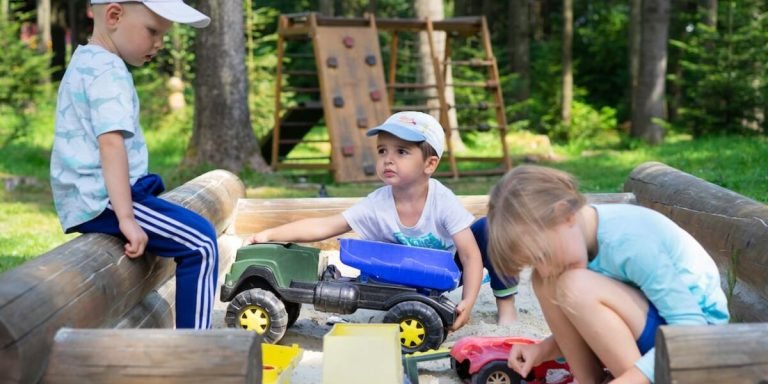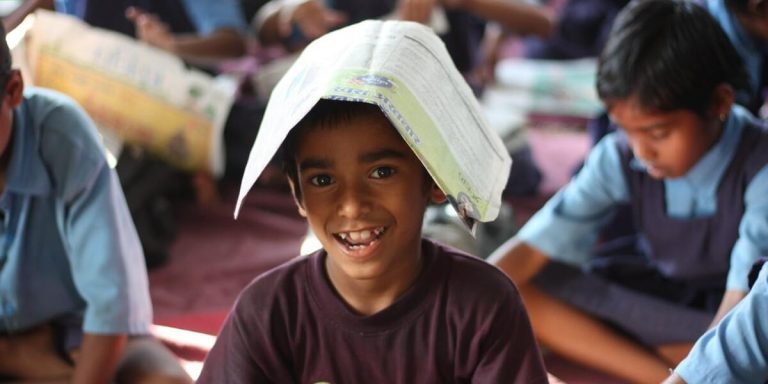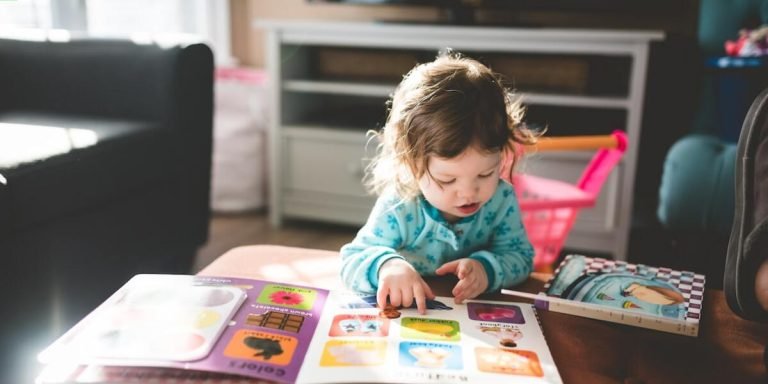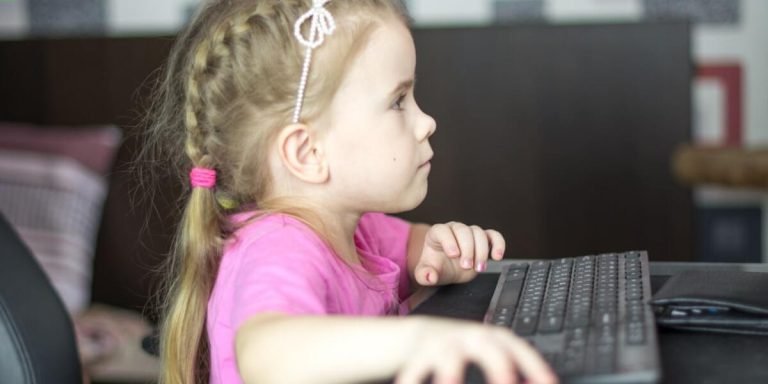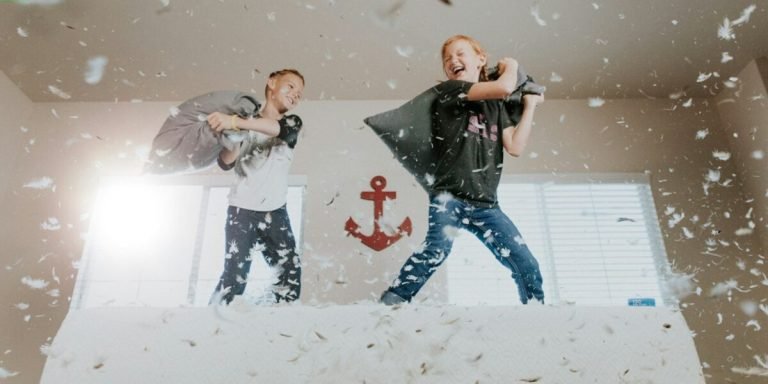What is a Kinesthetic Learner: A Comprehensive Guide to Understanding This Learning Style
Understanding different learning styles can greatly enhance the ways we teach and learn. One such style, often overlooked but crucially important is kinesthetic learning. But what is a kinesthetic learner?
A ‘Kinesthetic Learner’ refers to those who gain knowledge best through physical activities rather than sitting passively in lectures or reading text materials.
While common teaching methods like memorizing facts and figures may work for some students, it doesn’t necessarily mean that every child will respond similarly well to this practice. For learners who are more inclined towards ‘experiential learning’ or ‘activity-based learning’, their experience drastically improves when they actually perform tasks related to their studies. The method aids them with better comprehension of concepts by rendering first-hand experience which lays the foundation of sustainable education.
Did you know?
A little-known fact is that Kinesthetic learners, often labeled as “fidgety” or “restless,” actually enhance their learning capabilities by moving around. In fact, research shows they can absorb information better while engaging in physical activities such as doing jumping jacks or walking!
Understanding Kinesthetic Learning: The Core Principles
Kinesthetic learning, often referred to as tactile or hands-on learning, is a teaching style that prioritizes action over observation. It’s based on the concept that children acquire knowledge more effectively when they physically engage with their environment rather than simply listening to lectures or reading texts. In today’s technologically advanced and interactive age of 2023, kinesthetic learners are beginning to find their niche in the world of education.
The core principles behind this learner-centric model underscore both experiential and activity-based learning approaches. Children are encouraged to explore concepts by interacting directly with tangible objects or participating in physical activities related thematically back towards academics – be it counting pebbles for mathematics lessons or enacting skits for literature comprehension tasks.
In essence, these methods stimulate different areas within a child’s brain facilitating stronger memory retention while promoting critical thinking skills. It also fosters better understanding since students actively involve themselves in constructing personal interpretations instead just passively absorbing information presented verbatim from textbooks.
Achieving success through kinesthetic strategies requires consistent practice tailored around unique individual strengths – indeed making ‘learning by doing’ an essential cornerstone within contemporary childhood education trends across schools globally in 2023.
Defining Kinesthetic Learning and Its Importance in Education
Akin to auditory and visual learners, individuals identified as ‘kinesthetics’ simply mean they thrive on movement and action during their learning process. They have the ability to master new material when it’s incorporated into bodily movements or hands-on tasks rather than just listening or watching.
Fast-paced games, interactive scenarios, craftwork – you know that child who can’t seem to sit still? He may well be an example of what a kinesthetic learner looks like! A misunderstood blessing in disguise perhaps?
Now onto why we should care about this mode of education so fervently kindergarten teacher speak passionately about. Simply put: not every kid learns at the same pace nor in the same way.
When traditional methods fall short for some students – those diagrams on blackboards might look meaningless scribbles to them– step in kinetic instruction saving our day. By offering children opportunities for active participation rather than passive observation only identifies different types of learners sooner but also helps harness potential quicker because engaging multiple senses aids retention better!
Educators across breathing space into lesson plans using activity-based techniques help kids achieve academic success despite initial struggle with conventional classroom setups seen before 2023 happened upon us.
Characteristics of a Kinesthetic Learner
What is a kinesthetic learner, you may ask? A key pillar in the realm of experiential learning or activity-based learning, kinesthetic learners are essentially hands-on individuals. These children learn best when they engage their sense of touch and movement.
Firstly, one prominent characteristic that separates them from other types of learners is their love for exploration and experimentation. Rather than listening to explanations or reading about concepts – which can often feel abstract and distant – these youngsters prefer diving straight into tasks. They have an urge to handle materials directly.
It’s not merely touching; it’s interacting with educational content physically.
Second on our list would be their affinity towards physical activities such as sports or dance classes- any form where they’re in motion aids tremendously in retaining information more effectively than sitting still at a desk all day long.
Thirdly, there’s an element called immersive concentration common among kinetic learners – being completely absorbed by what they’re doing simply because it involves action.
Additionally, many parents observe that kids who fall under this category will show proficiency in memorizing through practice rather steps described visually/orally alone.
Naturally inclined toward understanding mechanics better due to its tactile nature exemplifies another trait.
Their preference for practical application over theoretical study also stands out vividly: dissecting frog specimens over studying biological diagrams draws them closer!
Implementing Experiential Learning Strategies for Kinesthetic Learners
Exploring the concept of kinesthetic learning opens up a broad spectrum of strategies for educators and parents aiming to enhance their children’s educational journey. Kinesthetic learners, often termed as “doers,” thrive in environments where they can engage physically with their lessons. These students learn best by doing rather than sitting back passively listening to lectures or reading long texts.
Incorporating experiential learning into everyday instruction is key when catering to these active learners’ needs in 2023. Experiential learning, which emphasizes real-world situations and hands-on tasks, aligns perfectly with how kinesthetic learners process information efficiently. This method allows them to grasp concepts more readily as it indulges their inherent need for physical activity while stimulating cognitive growth simultaneously.
Implementing these methods creatively could involve activities such as role-playing scenarios related to the curriculum content or conducting experiments that illustrate scientific principles practically. In essence, creating an interactive space that fosters exploration will channel kinetic energy positively towards enhancing knowledge absorption among this group of unique young minds.
Classroom Activities that Cater to Physical Engagement
Understanding kinesthetic learners and their unique needs is imperative in today’s education system. Known for being hands-on and physical, kinesthetic learners reap maximum benefits from experiential learning or activity based learning strategies.
A question that might arise is – what is a kinesthetic learner? They are individuals who learn best through physically engaging activities. They excel when they can touch, move, build or experiment directly with the material at hand.
As we delve into classroom activities catering to such students’ physical engagement needs, it becomes crucial to create opportunities where these young minds get involved deeply beyond just listening and viewing content passively.
1. Science Experiments: Nothing facilitates active interaction better than science experiments! Kinesthetic learners will enjoy practicing hypothesis-based thinking while participating actively in performing various scientific trials.
2. Role-Playing Activities: History lessons become fascinating when children enact them as plays or engage in storytelling sessions bringing alive characters from tedious textbooks!
3a) Outdoor Games involving Math Problems: Incorporate math problems within playful outdoor games pushing kinetic learners outside conventional study desks grappling with abstract concepts of maths only on paper!
4b) Art projects mapping out Geography Lessons: Allow kids to paint topographical maps instead of restricting geography understanding merely via visual aids! This way they make sensory connections enhancing subject retention effectively.
5c) Building Models mirroring Architectural Landmarks: Have your class construct models replicating famous architectural landmarks touching upon engineering principles effortlessly alongside history!
How Technology is Shaping Hands-On Learning for the Tactile Student
The advent of technological tools in the education sphere has brought about a significant shift in how kinesthetic learners interact with their learning environments. Kinesthetic learners, also known as tactile or hands-on learners, learn best by doing tasks and physically engaging with materials. So what is a kinesthetic learner?
In essence, these individuals thrive when they are allowed to move around during lessons and touch objects related to what they’re studying.
Firstly, interactive screens have emerged as vital components within classrooms and homes alike. These devices provide multisensory stimulation; allowing children not only to view content but engage with it fully – touching items on screen can trigger auditory feedback enhancing understanding further.
Secondly there’s Virtual Reality (VR) which offers an immersive tool that places pupils directly into virtual scenarios where knowledge is gained through lived experiences rather than mere observation or rote memorization. It’s akin to walking along an ancient Roman road instead of just reading about one!
Next up is Augmented Reality (AR), another groundbreaking intervention wherein digital elements like diagrams or animations get superimposed onto real world surroundings using smartphones or tablets- rendering abstract concepts easy-to-understand anchored through concrete visual associations.
Measuring the Impact of Activity-Based Learning on Kinesthetic Students
It is undeniable that the traditional, one-size-fits-all teaching method doesn’t cater adequately to all students. Particularly for kinesthetic learners, who constitute a significant portion of any classroom group. Kinesthetic children learn best when they interact with their environment in a tactile manner and engage physically in the learning process.
Activity-based learning becomes indispensable when it comes to nurturing these young minds effectively. By immersing students into the physical experience of discovery and problem-solving, this approach resonates especially well with kinesthetic learners as information retention drastically increases compared to passive forms of study like reading or listening.
Indeed, an exponential growth has been discerned concerning academic performance among those subjected to activity-based methodology versus conventional approaches. The impact extends beyond mere scholastic achievement as it fosters essential life skills such as team collaboration and critical thinking while also improving interpersonal relationships amongst peers through shared experiences on hands-on activities.
In 2023’s dynamic education landscape where student-centric pedagogies are emphasized more than ever before; integrating activity based-learning for catering holistically towards multiple intelligences including charactersitic traits exhibited by kinesthetically inclined youngsters marks an imperative shift we must undertake.
Assessing Academic Progress through Practical Assignments
Kinesthetic learners flourish when they’re actively engaged in the learning process. Your child may be a kinesthetic learner if they enjoy working with their hands, prefer physical activity over sitting still and have an easier time understanding concepts through practical application.
So what is a kinesthetic learner’s academic progress like under experiential or activity-based learning? And how can we effectively measure it?
Here are some avenues to consider when assessing your child’s development:
1. **Practical Assignments**: Kinesthetic students often find success in assignments that require active participation rather than rote memorization or abstract thinking. Thus, implementing more project-based tasks where children are encouraged to move about and interact produces valuable evidence of knowledge assimilation.
2. **Physical Demonstrations**: Children who learn best via movement thrive during demonstrations. For example, measuring their ability to demonstrate science principles physically could be one way of gauging progress.
3. **Hands-on Experiments** : While traditional tests might not suit these pupils well due to their nature of enjoying concrete experiences; conducting experiments allows educators and parents alike the chance for assessment based on observation instead of just written answers.
4. **Role-playing activities:** Role plays provide another opportunity for observing cognitive growth within this group since it challenges them at multiple levels including memorizing lines but also adapting spontaneously according situation changes which happen throughout play sessions.
Long-Term Benefits of Experiential Education on Career Readiness
The long-term benefits of experiential education or activity-based learning on career readiness, particularly for kinesthetic learners, cannot be overstated. For those wondering “what is a kinesthetic learner”, these are individuals who learn best through hands-on experiences and physical activities rather than mere theoretical exposition.
In contrast to traditional teaching methods that often rely heavily on theory and memorization alone, experiential education encourages students to engage actively with their studies – an approach which proves especially beneficial in preparing them for future careers.
Having the independence to explore topics first hand ensures a deeper understanding of the lessons at play. It enhances problem-solving abilities as they’re met with real-life situations requiring practical solutions.
Confidence building forms another significant advantage conferred by this educational method. The power of “doing” helps reinforce self-assuredness among students; lending weight not just academically but also when it comes time for job interviews or embarking upon their chosen professional paths.
Experiential Learning equips children better when dealing with unpredictable scenarios going ahead in life due its tendency towards cultivating adaptability skills.. This includes navigating new technologies and evolving industry trends – vital given today’s rapidly progressing digital era.
Moreover, honing interpersonal communication becomes effortlessly intertwined within Activity-Based Learning since much learning arises from group tasks & projects reflecting workplace dynamics. Such exposure can help smooth out transitions into team-oriented jobs later down line..
Conclusion
In navigating through the diverse realm of childhood development, understanding “what is a kinesthetic learner” becomes an essential roadmap for parents and educators alike. This comprehensive guide has hopefully shed light on how to identify and support children who learn best by doing or experiencing things physically.
As we conclude this enlightening journey, remember our website remains a treasure trove full of invaluable insights on educating children. Feel free to explore further for more guidance in nurturing young minds towards all-round growth. Because after all, every child deserves tailored education strategies primed for their unique learning style!


